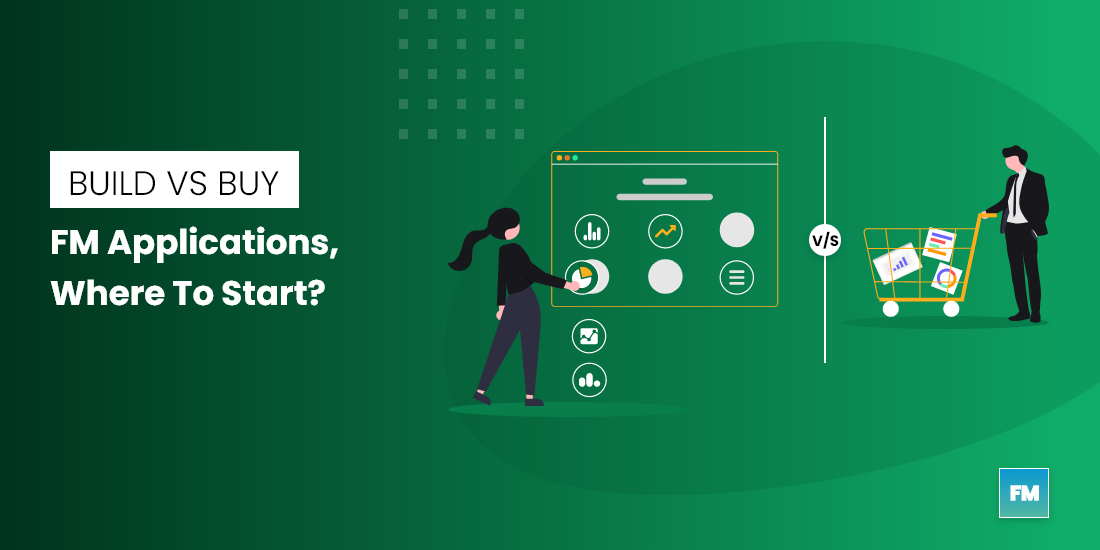In July this year, IBM joined hands with one of the leading facility management firms CBRE, to provide AI-based maintenance services to CBRE’s data center clients. And this is not the very first CBRE’s first partnership with a tech giant to come up with a collaborative solution. They have worked with Microsoft for interactive people management applications, and power platform as a workplace solution, and if you look at CBRE Global’s past investments and partnerships, they have done multiple tech acquisitions along with in-house dedicated DT Centres. They also have numerous applications listed under the CBRE Vantage, a suite of enablement technologies.
Overall they have collaborated with numerous technology providers to try to fit into their client’s requirements needless to say they have built, brought and partnered with third-party tech providers whenever is necessary. But is this strategy applicable for everyone across the verticals? What are the layers, CXOs would need to unwrap before reaching the decision?.
Facility management teams never before have faced issues they have faced like this year with tech integrations when adding up their tech stack with workplace management and remote asset monitoring applications. Some of the buying decisions were obviously Adhoc which came in with a response to safety and social distancing protocols. But now when things are settling down with the new normal in most parts of the world, they can certainly ponder upon their future tech stack and suite of new services and decide whether they should build them or buy them?
Discussion on Build vs buy or an argument over the same, is not new to facility management firms, which is running on outsourcing tasks for their partners. It has evolved from an in-house to consolidated services and ultimately, integrated facility management solutions, that have excelled in making partnerships and managing people. However, when it comes to deciding the digital strategy for themself and their clients it has been facing fierce competition from the incumbent tech startups and consulting firms.
Easier said than done, for an FM firm to decide on building a suite of applications or subscribing to one can be a far complex decision, there are multiple layers of hierarchy and deciding factors that come into the picture. It’s Obvious, there can’t be a common strategy that fits for all despite the well-known pros and cons of each decision.
Let’s assess the aspects that help in simplifying the decision:
Strategic roadmap for the FM tech stack
For a tech-enabled FM firm, it’s Important to do research on the ideal tech stacks for different types of clients regardless of the client’s expectation from one. For operations and maintenance, that includes data acquisition hardware, data storage & processing applications, visualization and control mechanism.
- Understanding client’s pain points,
- leveraging internal and external capabilities to come up with a solution
- Standardizing an application/software based on demography and competitive market conditions
- Keep experimenting with a healthy combination of partnerships and a homegrown application suite
For a CIO, building an application or buying one is not like head or tail decision. here are two primary aspects that involved in each decision
1.Strategic decision
Competitive
A set of applications or services providing the unique value proposition to the client, that can help them secure a contract or help them estimate efforts for successful bidding.
Leverage
Partnership with a techfirm to create an ecosystem of applications, based on their platform which can only be available to their clients. Leveraging FM’s understanding of operational needs and domain expertise of technology partners.
2.Technical/functional decision
Competency
In house team of data analysts, programmers, SMEs, and business analysts to research, ideate, test and successfully deploy a new application
Well that’s not all, there is one more aspect to simplify decision making, that is Lifecycle analysis of the application/ software
According to Gartner’s Pace-Layered Strategy, which is used to categorize applications in three layers based on complexity, usage
- Systems of record:
These applications help in building the foundation to technology stack and the capabilities of a firm. These are roughly standardized across the sector and leave little scope for differentiation. For example, in facilities BMS, ERP and CMMS would be the bare minimum yet fundamental tools required for effective O&M activities.
Suggestion: No need to build it in-house, can be brought from a leading vendor.
- Systems of differentiation:
Solutions that define one process from another, or give a competitive advantage to efficiency and scale, for example – two different Analytics applications that use similar asset data inputs and provide different insights, one of the application, provides more accurate and contextual recommendation because of the unique logic it possesses.
Suggestion: Can be customized/ white-label or build depending on the decisional framework.
- Systems of innovation:
A unique approach that has never been tested or experimented with, application or technology that is in the nascent stage but holds promising use cases and can only be deployed as PoC.
For example, digital twins or AR-based remote asset management applications
Suggestion: regardless of the client’s needs forward-thinking FM firms invest a lot in creating such a niche application to project their vision and capabilities.
In this Gartner model, each layer suggests whether one should build, buy, or partner with a technology vendor for.
Building on core competencies and niche areas and outsourcing or buying standardize applications that are responsible for building a basic data infrastructure. This way CIOs can follow a pragmatic approach to decide on build, buy or partner.
Want to know SERCO’s take on the Build Vs buy argument? Attend this virtual session of Re: CONNECT organized by UNISSU (sponsored by Xempla) on Jan 07th, 2021 REGISTER HERE

Leave a Reply